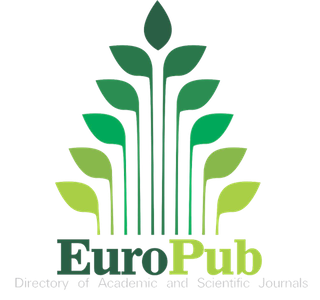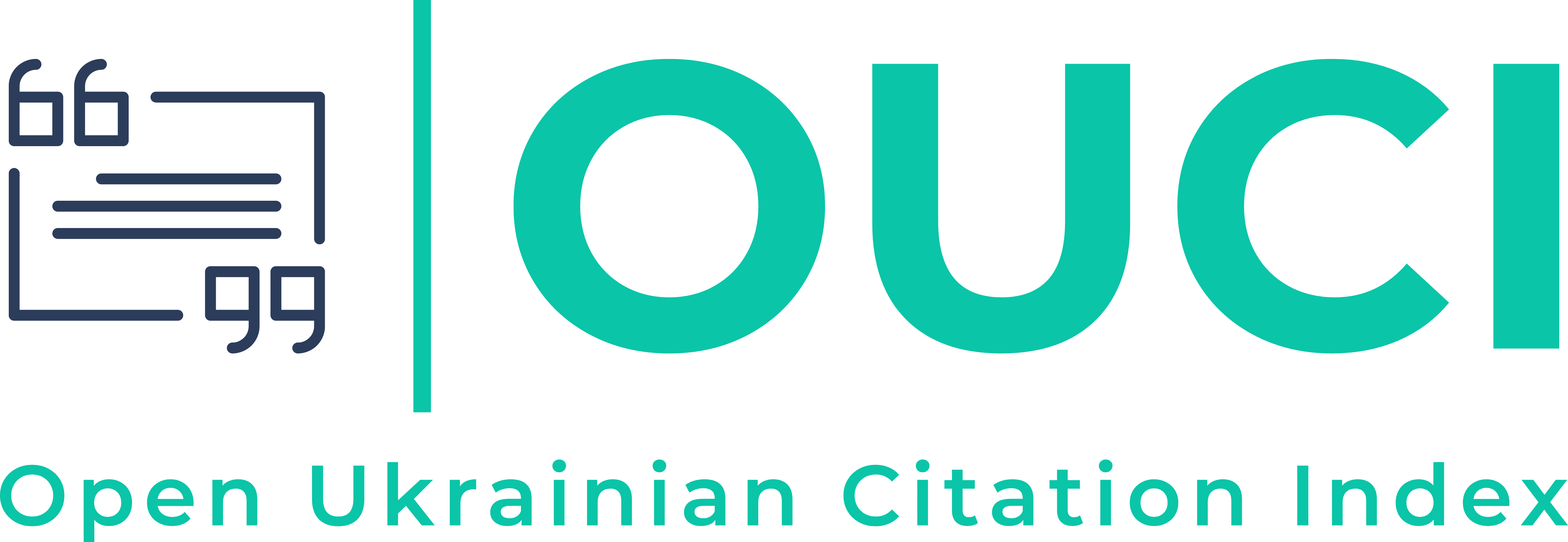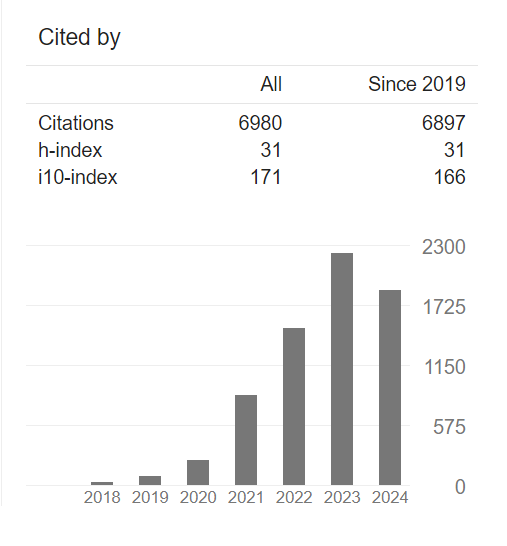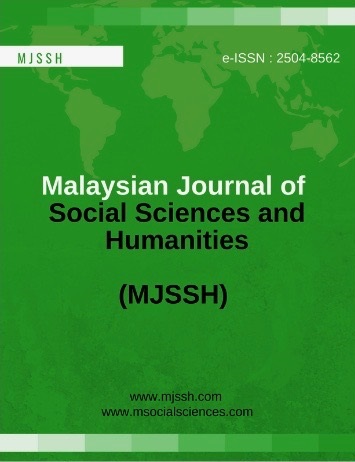Navigating Cultural Desolation: Exploring T.S. Eliot's Depiction of Anxiety and Fragmentation in The Waste Land
Abstract
Thomas Stearns Eliot (1888–1965), a remarkable English literary figure, is best known for the depiction of his age in his literary works. In this regard, scholars suggest that he lived and wrote in “an age of anxiety” and this very “anxiety” is often attributed to “profound transformations in human modes of life” engendered by cultural and institutional practices of modern condition. In Eliot, one can easily sense this phenomenon particularly in his early poems. These poems are said to have embodied this “anxiety” with great depth. In this regard, The Waste Land considered as one of the representative poems of modernist English literature, captures the crisis and anxiety of his age provocatively. Here, he draws the picture of a cultural waste land of post war Europe where the traditional way of life was disintegrating through the decline of traditional values, authority and order. The waste-landers of Eliot, to a large extent, suffer from loss of faith, loss of social nature of personality that created fragmentations in their lives. In this paper, through a method of analytical understanding and interpretation of the poem The Waste Land relating to its social and historical contexts, we will make an understanding of it focusing nature and extent of cultural anxiety depicted by Eliot. Thus, our study would contribute further to clarify the Eliotic understanding of cultural anxiety in the context of modernity as depicted in The Waste Land.
Downloads
References
Ahmed, S. (2019). “T.S. Eliot er Kaibbe Adhunik Manusher Sangkat” (The Crisis of Modern man in T.S. Eliot’s poetry” published in Gunijon. Ed. AKM Mohiuddin Ahmed. Rajshahi: Sharokgranthat Prokashana Committee.
Bardoloi, L. (1997). The Spiritual Crisis of Contemporary Civilization and the poetry of T S Eliot. [PhD Thesis], Department of English, Gauhati University. http://hdl.handle.net/10603/67808
Bloom, H. (2007). T.S.Eliot’s The Waste Land: Comprehensive Research and Study Guides. New York: BLOOM’S Literary Criticism: AN Imprint of Infobase Publishing.
Cooper, J. X. (2006). The Cambridge Introduction to T. S. Eliot. UK: Cambridge University Press.
Cooper, J. X. (2004). Modernism and the Culture of Market Society. New York: Cambridge University Press.
Dzwonkoski, F. P. (1970). T.S. Eliot: Time and the Human Will. [PhD Dissertation], Indiana University ProQuest Dissertation Publishing, https://www.proquest.com/openview/ffdf9bb1d2aa7feccdf571d3825e555b/1?pq-origsite=gscholar&cbl=18750&diss=y
Eliot, T. S. (1915). The Love Song of J. Alfred Prufrock. Poetry, 6(3), 130–135. https://www.jstor.org/stable/20570428
Eliot, T. S. (1922). The Waste Land. Boni and Liveright.
Eliot. T. S. (1948). “The Idea of a Christian Society”. Christianity and Culture. Florida, USA: Harcourt Brace & Company.
Ferguson, M. W., Salter, M. J., & Stallworthy, J. (2005). The Norton anthology of poetry (5. ed., [Nachdr.]). Norton.
Freeland, M. D. (2015). Conceptual Decolonization of Space: Worldview and Language in Anishinaabe Aking. [PhD dissertation], University of Denver, Electronic Theses and Dissertations. 210. https://digitalcommons.du.edu/etd/210.
George, A. G. (1962). T.S. Eliot: His Mind and Art. London: Asia Publishing House.
Gharabegian, A. (2008). The Reappearance of God: Matthew Arnold and T.S. Eliot in Dialogue. [PhD Dissertation], The City University of New York.
Giddens, A. (1990). Consequences of Modernity. London: Polity Press.
Hinchliffe, A. P. (1987). The Wasteland and Ash Wednesday. Macmillan Publishers Ltd.
Islam, S. M. (1984). The Quest for Eden in Eliot’s Poetry: Dantean Analogues. The Dhaka University Studies.
Jain Manju. (1991). A Critical Reading of Selected Poems of T.S.Eliot. Oxford: Oxford University Press.
Kocka, J. (2016). Capitalism A Short History. New Jersey: Princeton University Press.
Lewis, P. (2015). The Cambridge Introduction to Modernism. New York: Cambridge University Press.
Mahfoud, B. (2009). Spiritual Development in the Poetry of T.S. Eliot. [PhD. Dissertation], Sheffield Hallam University (United Kingdom) ProQuest Dissertations Publishing, https://www.proquest.com/openview/8bae309a4603b333b075ae87a8af6a59/1?pq-origsite=gscholar&cbl=2026366.
Mambrol, N. (2020). Analysis of T.S. Eliot’s The Waste Land. Literariness. (https://literariness.org/2020/07/04/analysis-of-t-s-eliots-the-waste-land/) (accessed on 24 February 2022)
Mayer, J.T. (1989). T.S. Eliot’s Silence Voices. New York: Oxford University Press.
McKee, A. (2001). A beginner’s guide to textual analysis. Metro Magazine, 138–149. https://eprints.qut.edu.au/41993/2/41993.pdf
Mukamal, A. (2017). Creative Impulse in the Modern Age: The Embodiment of Anxiety in the Early Poetry of T. S. Eliot (1910-1917). [Honors Thesis]. Department of English. Duke University, Durham, NC.
Pani, P. (2013). Reflections on the Existential Philosphy in T.S. Eliot’s Poetry. The Journal of Natural and Social Philosophy, 9(1), 301-316.
Parashar, A. (2015). Reverberations of environmental crisis and its relevance in managing sustainability: An ecocritical reading of T. S. Eliot’s The Waste Land. DECISION, 42(2), 159–172. https://doi.org/10.1007/s40622-015-0081-5
Poll, E. V. D. (2013). Europe and the Gospel: Past Challenges, Present Influences, Mission Challenges. London: Versita.
Rhee, S. (2012). Post-War Europe: The Waste Land as Metaphor. [Honors Thesis Senior Honors Theses]. Liberty University, https://digitalcommons.liberty.edu/honors/272.
Sufian, A. (2014). “T. S. Eliot’s The Waste Land: Anticlimax of Modern Life in a Claustrophobic World.” Galaxy: International Multidisciplinary Research Journal, 3(4). file:///C:/Users/www.ctgtechno.com/Downloads/T_S_Eliot_s_The_Waste_Land_Anticlimax_of.pdf (Accessed on 10 February 2022)
Svarny, E. (1989). T.S. Eliot and Early Modernism. Philadelphia: Open UP.
Traversi, D. (1976). T.S. Eliot: The Longer Poems. London: The Bodley Head.
Webb, E. (2009). Worldview and Mind. Columbia and London: University of Missouri Press.
Weinberg, K. (1969). T.S. Eliot and Charles Baudeeaire. Paris: Mouton, The Hague.

















